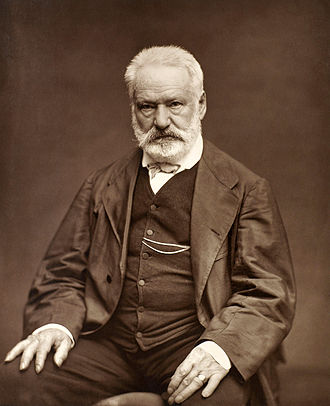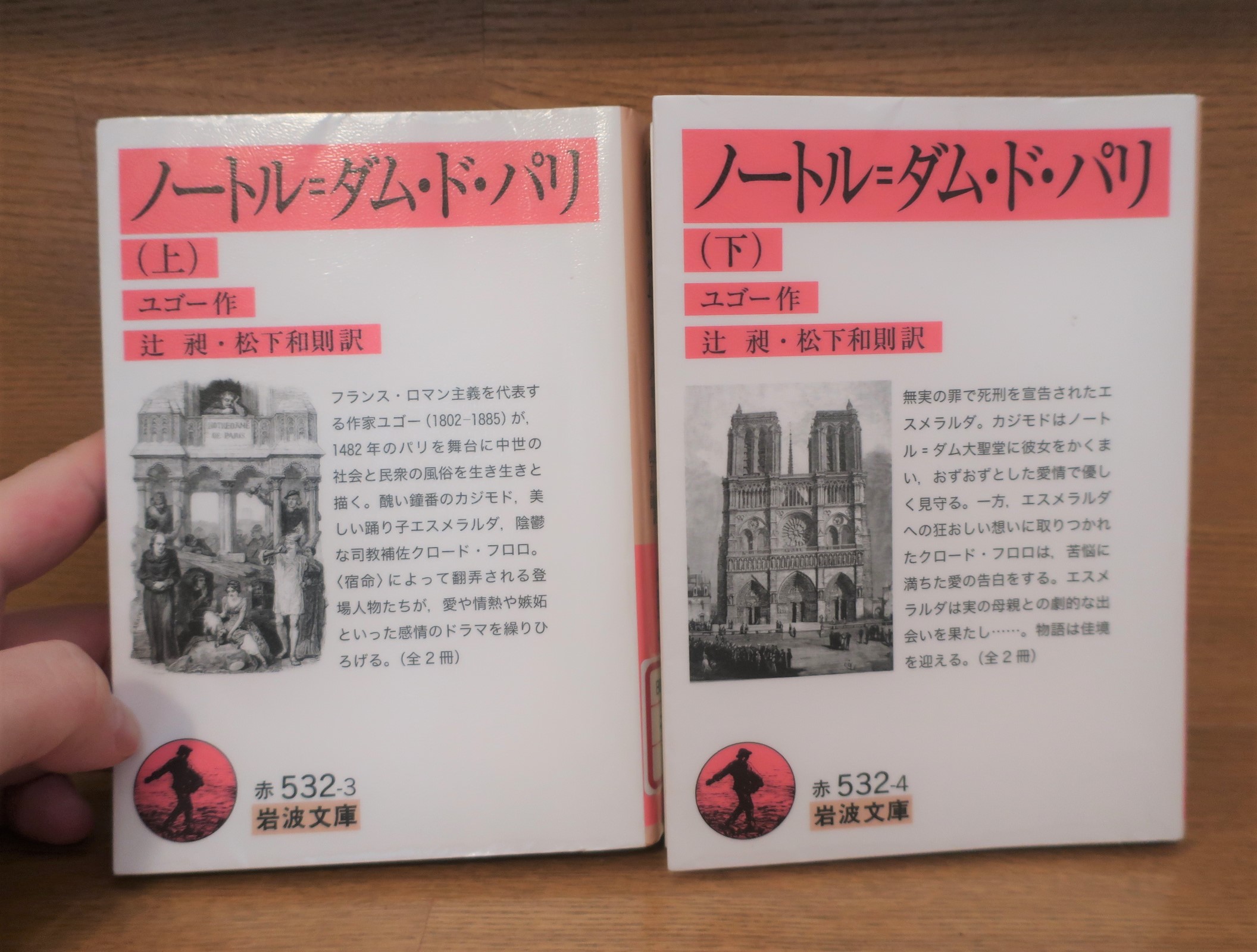Table of Contents
Hugo's "Notre-Dame de Paris," based on the Disney film "The Bells of Notre-Dame" and the Shiki Theatre Company's musical

Victor Hugo (1802-1885)Wikipedia.
Many of you may know this work from Disney movies and musicals.
The Disney film "The Bells of Notre Dame" was based on Hugo's work, and the songs in the film were composed by Alan Menken, who also composed the music for "Aladdin" and "Beauty and the Beast," so the film has a very good collection of songs.
I also read the original story and then watched the animated movie, and the singing scenes were truly amazing.
The Shiki Theatre Company also has a musical production, which is based on the Disney film "The Bells of Notre Dame.
The Shiki Theatre Company's "The Bells of Notre Dame" page isthis way (direction close to the speaker or towards the speaker)
It's a great synopsis and overview of the musical, so please take a look at that as well.
Summary of "Notre-Dame de Paris", synopsis
Notre-Dame de Paris, published in 1831, is considered Hugo's first masterpiece.
I read the book, Iwanami Shoten Publishing, Tsuji.audacityThe book is "Notre-Dame de Paris," translated by Kazunori Matsushita.
Let's take a quick look at the cover synopsis.
Hugo (1802-1885), a leading French Romantic writer, vividly depicts medieval society and popular customs in Paris in 1482. The ugly bell-keeper Casimodo, the beautiful dancer Esmeralda, and the gloomy assistant bishop Claude Frollo. The characters are tossed about by fate, and the drama of emotions such as love, passion, and jealousy unfolds. (2 books)
Esmeralda is sentenced to death for a crime she did not commit. Casimodo hides her in Notre-Dame Cathedral and tenderly watches over her with beguiling affection. Meanwhile, Claude Frollo, obsessed with mad feelings for Esmeralda, makes an anguished confession of love. Esmeralda has a dramatic encounter with her own mother. ...... The story reaches its climax. (2 books in total)
Iwanami Shoten Publishing, TsujiaudacityNotre-Dame de Paris, translated by Kazunori Matsushita.
For those of you who have seen the Disney movie "The Bells of Notre Dame," you may be wondering, "Hmm? I think there is a part in the synopsis of the original film that makes you think, "Hmmm?
In the film, Claude Frollo played the role of a judge.
But in the original, Frollo is an assistant bishop.
I honestly was surprised by the movie since I had read the original story before watching the movie.
The story was completely different from the original.
The names and general characteristics of the characters remained the same, but their personalities, roles, and storylines were completely different. This was a surprise. It is a completely different story from the original.
But the movie is a great movie. It is indeed Disney.
It's just that "I took inspiration from the original story and created a new story." I guess that's what it means.
As the work that inspired Disney, Hugo's "Notre-Dame de Paris" is a great work with great depth.
Now, "Notre-Dame de Paris," like "Les Misérables," will suddenly give you a hard time when you start reading it.
Shigeru Kashima, a French literature scholar, states
This tendency seems to be particularly strong in "Notre-Dame de Paris". The reason is that it seems as if Opéra's long prelude goes on and on and on, and the curtain does not open easily. Various characters emerge one after another from the motley crowd, but we don't even know who the main character is. For today's busy readers, it seems that they cannot wait for the story to start moving. It is a novel with a very strange beginning.
Moreover, just when you think the story has finally begun to move forward, the narrative digresses once again, and the story of architecture, history, etc. continues on and on and on. It is an unbalanced novel, quite different from the modern novels we are accustomed to reading.
In addition, not only have the stories been omitted or altered in the movies and "anime," but the character of Claude Frollo has been changed from a clergyman to a powerful judge in order to simplify the story, and the tragic ending of the original story has been changed to a happy ending. Therefore, the novel is not accessible because it feels very different from the adaptations. In any case, it is a very difficult novel to read for modern readers.
Despite this, the story has been so well received by the population that it has been remade repeatedly, given new life in movies and musicals, and revived like a phoenix.
100 Minutes de Meitaku: Hugo, Notre-Dame de Paris, The Story of the Cathedral, Shigeru Kashima, p. 4-5.
As Mr. Kashima stated, the early stages of this work were really painful to read.
Hugo has a hard time getting into the meat of the story. This is.Les Miserables.But it was.
But beyond this painful development, the story rages on.
From the middle of the film, there is no stopping. Les Miserables" was a very interesting film, but this one is no slouch either.
The story moves around Notre Dame Cathedral with characters with strong personalities.
In particular, the battle at Notre Dame Cathedral at the end of the film is like a Hollywood movie itself. It is as if you are watching a powerful scene with the camera moving in all directions.
This work is too dense. And it is too tragic.
It is impossible in one article to touch on the content of this work.
It is such a rich story.
It is even said that this work has led to the French people's love of Notre Dame Cathedral growing stronger all the time.
Notre-Dame de Paris" is an intricate work, so the following commentary by Shigeru Kashima is recommended for a more in-depth understanding of this work.
This work is a story that has had a strong impact not only in France, but around the world as well.
In fact, one of them was, as usual, Dostoevsky.
Dostoevsky and "Notre-Dame de Paris
As a young man, Dostoevsky was a great admirer of Hugo's work.
Dostoevsky also read this "Notre-Dame de Paris," published in 1831, in French.
At that time, the Russian intellectual class all spoke fluent French. What a luxury to be able to read Hugo's works in the original language. I envy you!
In 1862, some 30 years after the publication of this work, Dostoevsky was co-editing a magazine called "The Times" with his brother.
He states in this magazine
Now that "Les Misérables" has been well received everywhere, almost worldwide, we suddenly realized that "Notre Dame de ParisFor some reason, the "Kalin" has not yet been translated into Russian, even though many European texts have already been translated into Russian. There are already so many European translations into Russian.
Needless to say, it is certain that everyone in our country read this novel in French before. However, first, only those who knew French read it, second, even those who knew French probably did not all read it, third, it was a long time ago, and fourth, the number of general readers who read French before, even 30 years ago, was very small compared to the number of general readers who wanted to read it with pleasure, but could not speak French. Fourth, we judged that the number of general readers who read French before and 30 years ago was very small compared to the number of general readers who wanted to read French with pleasure but could not speak French. Today, the number of general readers is probably ten times larger than it was thirty years ago.
And one more thing - and a crucial one - all of this has already happened a long time ago. The current generation will probably never read the old ones again. We believe that the current generation of readers is hardly aware of Victor Hugo's novel. We have therefore ventured to translate a work of genius and power into this magazine, and to introduce to the general public in our country the most remarkable work of French literature of the present century.
We think that 30 years is such a long distance that even those who read the novel at that time may not be too lazy to go back and read it again.
Shinchosha edition of "The Complete Works of Dostoevsky, Definitive Edition 25," "Preface to the Translation of Hugo's Notre-Dame de Paris," p. 354.
Some line breaks have been made.
To my surprise, Dostoevsky was about to introduce the first Russian translation of "Notre-Dame de Paris" into Russian.
As I mentioned earlier, all Russian intellectuals are fluent in French.
Therefore, it has not been translated into Russian to this point because there was no need to go to the trouble of translating it into Russian.
But Dostoevsky spotted this and decided to publish this work in order to make it available to more Russians.
The year 1862 was also the year that Hugo's "Les Misérables" was released, creating a worldwide Remisée craze.
We can sense Dostoevsky's spirit of wanting to reintroduce Hugo's masterpiece published 30 years ago at this time. It shows how much he was attached to "Notre-Dame de Paris.
Conclusion
It was well known that "Les Miserables" was a work that Dostoevsky was very much attached to, but I was surprised to learn that "Notre-Dame de Paris" also had such a deep connection with him.





































